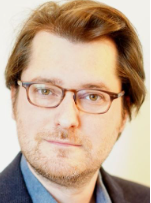
| 姓名: | Alexandre Grassart | 性别: | 男 |
|---|---|---|---|
| 学历: | |||
| 专家类别: | 职称: | 研究员 | |
| 所属部门: | 生物工程与微生物研究组 | 学科类别: | |
| 联系电话: | 电子邮箱: | ||
| 通讯地址: | 上海市岳阳路320号 | ||
| 个人简介: |
|---|
2020-Present: Professor and Principal investigator Institut Pasteur Shanghai - Chinese Academy of SciencesInstitut Pasteur Shanghai - Chinese Academy of Sciences , Center for Microbes, Development and Health Shanghai, China 2014-2019: Senior Post-doctoral Fellow Institut Pasteur Paris - INSERM Unit of Molecular Microbial Pathogenesis Paris, France 2010-2014: Post-doctoral Fellow University of California Berkeley David Drubin Lab Berkeley, USA 2006-2010: Ph.D Institut Pasteur - University Paris-Saclay (Paris 11) Institut Pasteur - University Paris-Saclay (Paris 11) Unit of Biology of Cell interactions Paris, France 2006 M.S University Paris Descartes (Paris 5) Paris, France |
| 研究方向: |
|---|
Research Topic: Our laboratory is exploring the complexity of the interactions happening at epithelial interfaces between microbes, host cells and microenvironment. In particular, we seek to elucidate how these events are dynamically integrated at the gut interface to function as a defensive barrier against pathogen infections. A first aspect of our research aims at understanding the spatio-temporal organization of gut microbial communities to gain new insights into the protective role of gut microbiota against pathogens, such as Shigella flexneri. A second aspect of our research aim at understanding how tissue microarchitecture and mechanical forces play a role in the maintenance of the intestinal microbial ecosystem and how these physical cues impact host-pathogen interactions. To pursue these goals, we are applying cutting edge strategies in stem cell bioengineering, genome-engineering, microfluidics and microfabrication to build ex vivo human mimetic organs (organ on chip). The high physiological relevance of these microfluidic models allow us to better model infectious processes and open new avenues for personalized medicine and drug discoveries. 本课题组致力于探索微生物、宿主细胞和微环境之间在上皮界面发生的相互作用的复杂性。试图阐明这些事件如何在肠道界面上动态整合,以作为防御病原体感染的屏障。 我们研究的一个方面旨在了解肠道微生物群落的时空组织,以获得对肠道微生物群对病原体(如志贺氏菌)保护作用的新见解。我们研究的第二个方面旨在了解组织微结构和机械力如何在肠道微生物生态系统的维护中发挥作用,以及这些物理线索如何影响宿主与病原体的相互作用。 为了实现这些目标,我们正在应用干细胞生物工程、基因组工程、微流控和微细加工的前沿策略来构建离体人体模拟器官(芯片上的器官)。这些微流控模型的高生理相关性使我们能够更好地模拟感染过程,并为个性化医疗和药物发现开辟新途径 Selected Bibliography: 1. Grassart A#, Valérie Malardé, Gobaa S, Anna Sartori-Rupp, Jordan Kerns, Katia Karalis, Benoit Marteyn, Sansonetti P and Sauvonnet N#. Cell Host & Microbe (2019) Sep 11;26(3):435-444. Bioengineered human organ-on-Chip reveals intestinal microenvironment and mechanical forces impacting Shigella infection. # Corresponding authors 2. Ferrari M, Malardé V, Grassart A, Salavessa L, Nigro G, Decorps-Leclere S, Masson V, Arras G, Loew D, Rhode J, Sansonetti Pj, Sauvonnet N. Shigella flexneri induces a global blockage in host cell intracellular transport leading to cell and tissue disorganization. PNAS. (2019) Jul 2; 116(27):13582-13591. 3. Bertot L*, Grassart A*, Lagache T*, Nardi G*, Basquin C, Olivo-Marin JC and Sauvonnet N. Cell reports (2018) Feb 6;(22):1574-1588. Quantitative imaging and statistical analysis of the dynamics of clathrin-dependent and -independent endocytosis reveal a differential role of endophilinA2 in dynamin2 recruitment. *These authors contributed equally to this work 4. Lagache T, Grassart A, Faklaris O, Sauvonnet N, Danglot L, Olivo-Marin JC. SODA: A statistical framework to analyze the spatial organization of molecules in multi-color super-resolution microscopy. Nature Communications (2018) Feb 15 ;9(1):698. 5. Grassart A*, Cheng AT*, Sun Hae Hong, Fan Zhang, Nathan Zenzer, Yongmei Feng, David M. Briner, Gregory D. Davis, Dmitry Malkov, Drubin DG. Actin and dynamin2 dynamics and interplay during clathrin mediated endocytosis. J Cell Biol. (2014) Jun 205 (5):721-735. *These authors contributed equally to this work |
| 科研进展: |
|---|
| 实验室成员: |
|---|